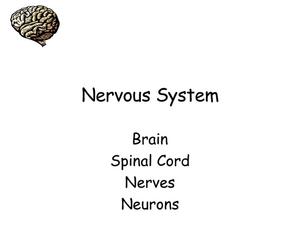Amoeba Sisters
Classification
Explores classification in biology as well as taxonomy hierarchy: domain, kingdom, phylum, class, order, family, genus, and species with The Amoeba Sisters! This video also discusses the importance of scientific names and why...
Amoeba Sisters
Chromosomes and Karyotypes
Explore chromosomes and karyotypes with the Amoeba Sisters! This video explains chromosome structure, how chromosomes are counted, why chromosomes are important, and how they can be arranged in a karyotype! This video also tackles a few...
Amoeba Sisters
Stroll Through the Playlist (a Biology Review)
Join the Amoeba Sisters as they take a brisk "stroll" through their biology playlist! This review video can refresh your memory of major concepts, help you identify what you need to re-study, and reinforce vocab. Expand these details for...
Amoeba Sisters
Animals: Tour of 9 Phyla
Join the Amoeba Sisters in exploring some general animal characteristics, major vocabulary used in classifying animals (such as symmetry, protostome vs deuterostome, cephalization, and coelom), and take a general tour of 9 major animal...
Amoeba Sisters
Digestive System
Join the Amoeba Sisters for a brief tour through the human digestive system! This video will address major structures and functions including the esophagus, stomach, small intestine, and large intestine. This video also mentions chemical...
Scholastic
Study Jams! Animal Cells
Using stunning computer imagery, this resource introduces life science learners to cells. It zeros in on the animal cell and the function of its more prominent organelles. Additional support is offered in the form of a self-assessment...
Scholastic
Study Jams! Plant Cells
Eight fine-quality slides depict the cells that make up plants. Viewers will see colorful microscope views of the nucleus, cell wall, vacuole, chloroplasts, tracheids, and pollen grains. The resource would apply in either a cell...
Bozeman Science
Cell Communication
Humans have taken communication to every corner of the Earth, yet our bodies, at the cellular level, have communicated without technology for millions of years. Learners view the variety of ways cells can communicate, whether right next...
Smithsonian Institution
What’s the “Matter” With Cells and Atoms?
Science concepts often span multiple disciplines. Learn strategies for helping pupils make the connections more effectively using an episode from the Good Thinking PD series. The lesson focuses on the concept of cells and atoms as they...
FuseSchool
Intro to Cells: Animal, Plant, Nerve and Red Blood Cells
Throw your dendrites in the air and wave 'em like you just don't care! An excellent video in the Fuse School playlist explains the parts and functions of cells. It describes their structures, functions, and specialties.
Prezi
Virus Cell Life Cycle/Structure
Viruses were nano before it was cool to be nano. The presentation covers the structure of a virus cell and the life cycle of a virus. It also includes two videos illustrating the virus cell in greater detail.
Amoeba Sisters
Inside the Cell Membrane
Without the cell membrane, our cells just couldn't keep it together! What else does this multifunctional membrane do? Take a deeper look at the fluid mosaic model using a video from an expansive biology playlist. Topics include embedded...
Bozeman Science
Cellular Organelles
Despite their microscopic size, eukaryotic cells are probably one of the most complex systems ever! Explore the structure and function of the major organelles of eukaryotic cells — the nucleus, ER, ribosomes, golgi complex, lysosomes,...
Amoeba Sisters
Homeostasis (and the Cell Membrane King)
The homeostasis pose is a popular yoga pose, and a video will explain how to do it properly. It also covers why we shiver, why we sweat, and the difference between a cell wall and a cell membrane.
Howard Hughes Medical Institute
Meiosis
Sex chromosomes determine gender, but how? An informative video presentation discusses meiosis with an emphasis on the structure of the sex cells. Viewers learn why the X and Y chromosomes are so important.
American Chemical Society
How Seashells Are Made
What do chalk and seashells have in common? They are both primarily calcium carbonate! Learn how sea creatures use crystalline structure to their advantage as they build their shell homes. An installment of a larger series on reactions...
Crash Course
Introduction to Anatomy and Physiology
The average human body loses 40–100 strands of hair in one day. This is the first video in a series of 47 and introduces scholars to anatomy and physiology, the study of the human body, and how it works. The narrator shares the history...
SciShow
Great Minds: Gregor Mendel
How would you feel if you made a huge scientific discovery, published it everywhere, and shared it with every scientist, only to have it ignored for 35 years because no one understood your genius? Unfortunately, Gregor Mendel died before...
Curated OER
Nervous System
After reading through this presentation about nerve impulses, students should be able to complete the sentences given with the correct terms and scientific vocabulary. The basics of the ion channel behavior are detailed along with a...
FuseSchool
What Are Chromosomes?
Two meters worth of DNA fits into a cell that is only two micrometers wide thanks to chromosomes. A video, part of a Fuse School Biology playlist, explains what chromosomes are and how they work. It describes where they are found and how...
Deep Look
Can A Thousand Tiny Swarming Robots Outsmart Nature?
Kilobots, made from only $15 worth of parts, work together to achieve a group goal. The video explains how with a few simple lines of programming, these tiny robots tackle tasks in much the same way animals or cells have for centuries....
PBS
When Insects First Flew
Insects developed wings and the ability to fly earlier than any other animal—when exactly did that happen? Scientists know this fact but struggle to explain when insect wings developed and how this entirely new structure appeared. PBS...
Bozeman Science
Reproductive System
The human reproductive system contains the largest (egg) and smallest (sperm) cells in the human body. It's time for scholars to review the differences between asexual and sexual reproduction. The instructor reminds them how meiosis...
Biology Junction
Annelids: The Segmented Worms
Here's a lesson that just might make your class squirm! Learn about segmented worms in a detailed PowerPoint presentation including the wriggly earthworms young scientists dig up in their backyards. Although seemingly simple creatures,...



















